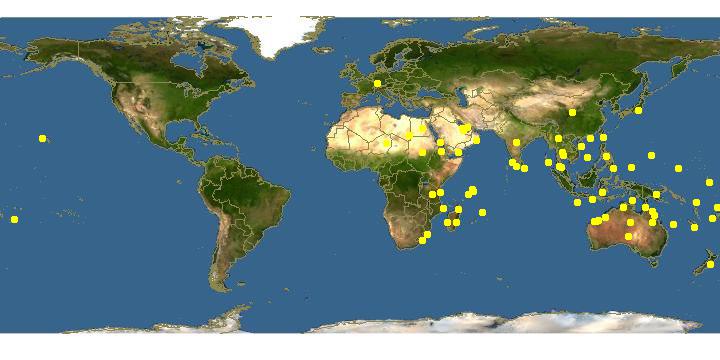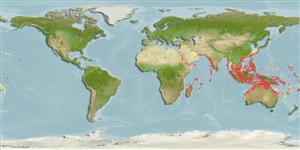http://www.fishbase.org/Summary/speciesSummary.php?genusname=Lethrinus&speciesname=lentjan ---> http://192.134.151.83/Summary/speciesSummary.php?genusname=Lethrinus&speciesname=lentjan
http://192.134.151.83/Summary/speciesSummary.php?genusname=Lethrinus&speciesname=lentjan ---> https://fishbase.mnhn.fr/Summary/speciesSummary.php?genusname=Lethrinus&speciesname=lentjan
https://fishbase.mnhn.fr/Summary/speciesSummary.php?genusname=Lethrinus&speciesname=lentjan ---> https://fishbase.mnhn.fr/summary/Lethrinus-lentjan.html
Lethrinus lentjan, Pink ear emperor : fisheries

You can
sponsor
this page
Common name (e.g. trout)
Genus + Species (e.g. Gadus morhua)
-

-
About this page
-
Languages
-
User feedbacks
-
Citation
-
Uploads
-
Related species
-


 Pink ear emperor
Add your observation in
Fish Watcher
Upload your
photos
and
videos
Pink ear emperor
Add your observation in
Fish Watcher
Upload your
photos
and
videos
Pictures
|
Videos |
Google image
 Lethrinus lentjan
Lethrinus lentjan
Picture by
Ryanskiy, A.
Teleostei (teleosts) >
Eupercaria/misc
(Various families in series Eupercaria) >
Lethrinidae
(Emperors or scavengers) > Lethrininae
Etymology:
Lethrinus:
Greek, lethrinia, a fish pertaining to genus Pagellus
.
More on author:
Lacepède
.
Environment: milieu / climate zone / depth range / distribution range
Ecology
Marine; brackish; reef-associated; non-migratory; depth range 10 - 90 m (Ref.
6390
). Tropical; 32°N - 35°S, 24°E - 167°W
Indo-West Pacific: widespread, from the Red Sea, Arabian (Persian) Gulf, and East Africa to the Ryukyus and Tonga.
Length at first maturity / Size / Weight / Age
Maturity: L
m
24.1
, range 18 - ? cm
Max length : 52.0 cm TL male/unsexed; (Ref.
1020
); common length : 40.0 cm TL male/unsexed; (Ref.
5450
); max. reported age: 19 years (Ref.
42001
)
Dorsal
spines
(total): 10;
Dorsal
soft rays
(total): 9;
Anal
spines
: 3;
Anal
soft rays
: 8. This species is distinguished by the following characters: body moderately deep, its depth 2.5-2.8 times in standard length; head length 0.9-1 times in body depth, 2.6-3 times in SL, dorsal profile near eye nearly straight; snout moderately short, its length about 1.9-2.4 times in HL, measured without the lip the snout is 0.8-1 times in cheek height, its dorsal profile nearly straight, snout angle relative to upper jaw between 60° and 70°; interorbital space convex; posterior nostril an oblong longitudinal opening, closer to orbit than anterior nostril; eye situated close to or far removed from dorsal profile, its length 3.3-4.8 times in HL; cheek not high, its height 2.4-3.1 times in HL; lateral teeth in jaws rounded often with conical tips, or molars often with tubercles; outer surface of maxilla with a longitudinal ridge; D X,9 with the 4th dorsal-fin spine usually the longest, its length 2.4-3.4 times in body depth; A III,8 soft rays, the first soft ray usually the longest, its length almost equal to or shorter than length of base of soft-rayed portion of anal fin and 1-1.2 times in length of entire anal-fin base; pectoral-fin rays 13; pelvic-fin membranes between rays closest to body without dense melanophores; cheek without scales; 46-47 lateral-line scales usually; 5 ½ scale rows between lateral line and base of middle dorsal-fin spines; 15- 16 scale rows in transverse series between origin of anal fin and lateral line; usually 15 rows in lower series of scales around caudal peduncle; 4-9 scales in supratemporal patch; inner surface of pectoral-fin base densely covered with scales, with a few scales, or naked; posterior angle of operculum fully scaly. Colour of body greenish or grey, shading to white below, centers of scales on upper sides often white; posterior margin of opercle and sometimes base of pectoral fins red; pectoral fins white, yellow, or pinkish; pelvic and anal fins white to orange; dorsal fin white and orange mottled with a reddish margin; caudal fin mottled orange or reddish (Ref.
114226
).
Inhabits sandy bottoms in coastal areas, deep lagoons and near coral reefs (Ref.
30573
). Juveniles and small adults commonly in loose aggregations over seagrass beds, mangrove swamps and shallow sandy areas while adults are generally solitary in deeper waters. Feeds primarily on crustaceans and mollusks but echinoderms, polychaetes and fishes are also consumed in considerable quantities (Ref.
2295
). A protogynous hermaphrodite (Ref.
55367
). Caught primarily by handline, traps, trawls, beach seines, and gill nets. Marketed mostly fresh (Ref.
68703
).
A monandric species (Ref.
55367
). Length at sex change = 30.8 cm TL (Ref.
55367
). Also Ref. 103751.
Carpenter, K.E. and G.R. Allen
, 1989. FAO Species Catalogue. Vol. 9. Emperor fishes and large-eye breams of the world (family Lethrinidae). An annotated and illustrated catalogue of lethrinid species known to date. FAO Fish. Synop. 125(9):118 p. Rome: FAO. (Ref.
2295
)
IUCN Red List Status (Ref.
130435
)
Least Concern (LC)
; Date assessed:
09 March 2015
CITES
Not Evaluated
Not Evaluated
Threat to humans
Harmless
Human uses
Fisheries: highly commercial
FAO - Fisheries:
landings
; Publication:
search
|
FishSource
|
Sea Around Us
More information
Countries
FAO areas
Ecosystems
Occurrences
Introductions
Stocks
Ecology
Diet
Food items
Food consumption
Ration
Common names
Synonyms
Metabolism
Predators
Ecotoxicology
Reproduction
Maturity
Spawning
Spawning aggregation
Fecundity
Eggs
Egg development
Age/Size
Growth
Length-weight
Length-length
Length-frequencies
Morphometrics
Morphology
Larvae
Larval dynamics
Recruitment
Abundance
BRUVS
References
Aquaculture
Aquaculture profile
Strains
Genetics
Electrophoreses
Heritability
Diseases
Processing
Nutrients
Mass conversion
Collaborators
Pictures
Stamps, Coins Misc.
Sounds
Ciguatera
Speed
Swim. type
Gill area
Otoliths
Brains
Vision
Tools
E-book
|
Field guide
|
Identification keys
|
Length-frequency wizard
|
Life-history tool
|
Point map
|
Classification Tree
|
Catch-MSY
|
Special reports
Check for Aquarium maintenance
|
Check for Species Fact Sheets
|
Check for Aquaculture Fact Sheets
Download XML
Summary page
|
Point data
|
Common names
|
Photos
Internet sources
AFORO (otoliths)
|
Aquatic Commons
|
BHL
|
Cloffa
|
BOLDSystems
|
Websites from users
|
Check FishWatcher
|
CISTI
|
Catalog of Fishes
:
genus
,
species
|
DiscoverLife
|
ECOTOX
| FAO - Fisheries:
landings
; Publication:
search
|
Faunafri
| Fishipedia |
Fishtrace
| GenBank:
genome
,
nucleotide
|
GloBI
|
Google Books
|
Google Scholar
|
Google
| IGFA World Record |
MitoFish
|
National databases
| OsteoBase:
skull
,
spine
|
Otolith Atlas of Taiwan Fishes
|
PubMed
|
Reef Life Survey
|
Socotra Atlas
|
Tree of Life
| Wikipedia:
Go
,
Search
| World Records Freshwater Fishing |
Zoological Record
Estimates based on models
Preferred temperature (Ref.
123201
): 24.6 - 29, mean 28 °C (based on 1436 cells).
Phylogenetic diversity index (Ref.
82804
): PD
50
= 0.5000 [Uniqueness, from 0.5 = low to 2.0 = high].
Bayesian length-weight: a=0.01514 (0.01267 - 0.01808), b=2.97 (2.93 - 3.01), in cm total length, based on LWR estimates for this species (Ref.
93245
).
Trophic level (Ref.
69278
): 3.9 ±0.2 se; based on diet studies.
Resilience (Ref.
120179
): Medium, minimum population doubling time 1.4 - 4.4 years (K=0.17-0.27; tm=2-3.8; tmax=15).
Prior r = 0.73, 95% CL = 0.48 - 1.10, Based on 3 stock assessments.
Fishing Vulnerability (Ref.
59153
): Low vulnerability (23 of 100).
Climate Vulnerability (Ref.
125649
): High to very high vulnerability (75 of 100).
Price category (Ref.
80766
):
Very high
.
Nutrients (Ref.
124155
): Calcium = 46.4 [31.1, 75.0] mg/100g; Iron = 0.907 [0.565, 1.423] mg/100g; Protein = 20.6 [18.1, 22.9] %; Omega3 = 0.155 [0.104, 0.226] g/100g; Selenium = 49.1 [27.2, 92.6] μg/100g; VitaminA = 20.5 [4.1, 122.7] μg/100g; Zinc = 2.25 [1.60, 2.99] mg/100g (wet weight);
Back to Search
Random Species
Back to Top
Accessed through:
Not available
FishBase mirror site :
localhost
Page last modified by :
mrius-barile
- 20 July 2016
Fatal error
: Uncaught ArgumentCountError: Too few arguments to function checkEcotox(), 1 passed in /var/www/html/summary/speciessummary.php on line 2304 and exactly 3 expected in /var/www/html/includes/speciessummary.lib.php:2579 Stack trace: #0 /var/www/html/summary/speciessummary.php(2304): checkEcotox() #1 {main} thrown in
/var/www/html/includes/speciessummary.lib.php
on line
2579
|






